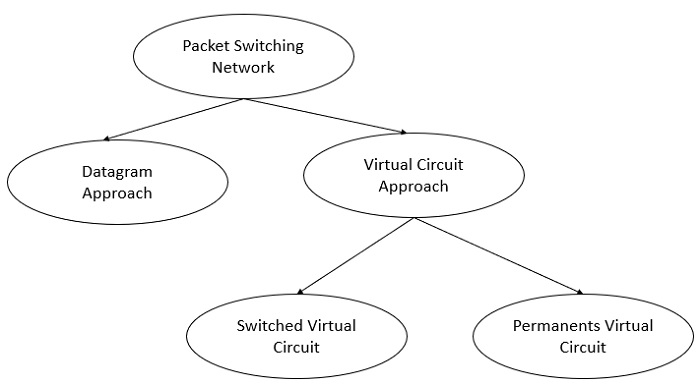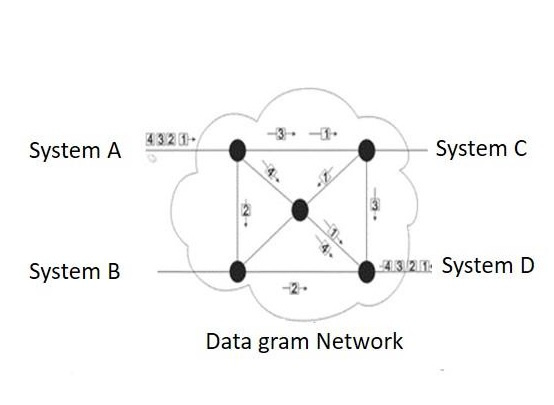
- Trending Categories
 Data Structure
Data Structure Networking
Networking RDBMS
RDBMS Operating System
Operating System Java
Java MS Excel
MS Excel iOS
iOS HTML
HTML CSS
CSS Android
Android Python
Python C Programming
C Programming C++
C++ C#
C# MongoDB
MongoDB MySQL
MySQL Javascript
Javascript PHP
PHPPhysics
Chemistry
Biology
Mathematics
English
Economics
Psychology
Social Studies
Fashion Studies
Legal Studies
- Selected Reading
- UPSC IAS Exams Notes
- Developer's Best Practices
- Questions and Answers
- Effective Resume Writing
- HR Interview Questions
- Computer Glossary
- Who is Who
What is the concept of datagram packet switching?
In a packet switching network, the data or information is transmitted between the sender and receiver in the form of packets. It does not require a dedicated physical path to transmit the fixed-size packet across the sun-network.
If the size of information is large, then it is subdivided into multiple packets. On the destination side these multiple packets are assembled together into the original message, one type of packet-switched network is the datagram packet switched network.
Types of Packet Switching Network
The packet switching network is of two types −
- Datagram packet switching
- Virtual circuit packet switching
The packet switching network is diagrammatically represented as follows −

Datagram Packet Switching
Now let us understand the concept of Datagram packet Switching.
Characteristics
The characteristics of the datagram packet switching are explained below −
In a datagram packet switched network the data packets follow their own path to send the packets between the source and destination.
During data transmission, after each packet reaches a node, then it decides which path the packet needs to follow the next.
This dynamic decision making of datagram packet switched networks improves the performance of data transmission.

In the above diagram the datagram approach is used to deliver four packets from station A to station X. All the four packets belong to the same message but they may travel via different paths to reach the destination i.e. station X.
Advantages
The advantages of the datagram packet switching are explained below −
It provides greater flexibility
It performs fast re-routing of data packets at the time of network congestion or failure.
Disadvantages
The disadvantages of the datagram packet switching are explained below −
Each packet has to decide its own dedicated path.
If large group of packets assembled at the same destination the network has to examine each packets that travels through the network node individually and it has to determine next path of each packets
This leads to inefficiency and wastage of time.

